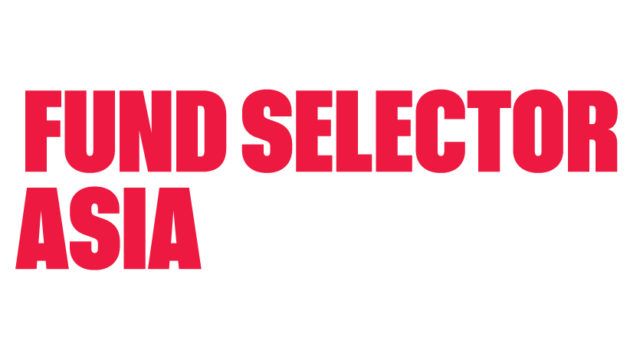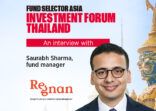An inevitable early question for seasoned fund manager Evy Hambro, given his surname, is whether he is related to the famous banking dynasty which has marked its place in the history of the City of London.
We are discussing his family lineage sitting in one corner of a huge boardroom table positioned so that we have the benefit of the amazing views of the City and beyond, hovering above the dome of St Paul’s Cathedral and other landmark buildings on the 13th floor of Blackrock’s City headquarters.
The answer, he tells me, is yes, but many years ago: “Sadly, we weren’t beneficiaries of that. My side of the family were in the army, rather than the bank.”
With that out of the way, we turn our attention to the Luxembourg-domiciled BlackRock BGF World Mining Fund, which he runs with considerable skill against a currently challenging backdrop.
Be resourceful
Natural resources funds have taken a hit in recent years with the change in sentiment towards emerging markets, and Hambro’s world mining portfolio has, unsurprisingly, not performed well during the downturn in the cycle.
But is now the time to invest? Hambro says he has been saying to clients for the past six months that, yes, it is time.
“Everyone has been talking about this emerging market-related supercycle with growth in a whole range of different sectors on the back of it, including natural resources. What we say in response is that the mining and natural resources sectors are always cyclical.
“The cycle that we went through from 2001 to 2008 was a very long up-cycle. Typically, when we look over many years the cycles average out at three or four-year periods.”
A key part of the most recent up-cycle was the “transformational event in commodities markets”, where China had been less than 10% of demand and ended up at 50% of demand for steel and iron ore, and 30-40% for copper, he says.
“Having been a small player, they grew to the largest consumer in a very short period of time. That had a profound impact on pricing, because we’d come out of a period in the late-’90s, post-Asian crisis, where the sector had gone through a period of under-investment, into new capacity because commodity prices were low.”
The financial crisis in 2008 delivered a demand-shock to the world for commodities and then things picked up again in 2009, when China injected the liquidity into the market.
Back in demand
“It is our view that we’re about to enter the next upward leg in the cycle. We might have seen the bottom in June of last year, when the shares were at their lows, or we’ll see it again at some point, whether it’s to do with some unexpected event like Russia and Ukraine, or whether it’s something unexpected that might come out of China to create a new low. But from everything we’re seeing today we would expect to see the sector bottoming and trending upwards.”
The US and Europe are the second and third-largest consumers of commodities in the world and both of these economies are now a contributing factor to the growth in demand, against the backdrop of the IMF’s forecast of 3.7% global growth in 2014, he says.
“I can’t remember a time in my career where we’ve had synchronous global growth and weak commodity prices. What we’re seeing is a better, more supportive commodity price environment and on the supply side, companies are under-investing again, all talking about paying down debt on balance sheets.”
Companies are also acting more responsibly in relation to shareholder capital, with plans to pay out excess cash to shareholders in dividends or share buybacks.
This all adds up to “not a bad investment rationale to be invested in equities” and Hambro thinks a flaw is developing in the market, with dividend coverage ratios at a high level.
“The evidence is building that we are trading at the low end of the pricing range for equities. Because of the under-investment into capacity, you’re building deficits for the future. We’ve been saying for the past three years the second half of this decade is likely to be a strong one for commodity prices.”
Mining’s not got the energy
The pure mining nature of Hambro’s fund has translated into more volatile returns versus Morningstar’s Equity Natural Resources peer group, as mining stocks have substantially lagged energy stocks over the past few years.
So how does he manage and control the volatility level of the fund? Hambro explains he has always run the fund with a lower level of volatility than its index.
“It’s not something that we’ve set out to achieve. Our stock selection and our portfolio construction has nearly always had a lower level of volatility than the benchmark. That’s not because we’re a cautious investor, it’s just been an output of the work that we’ve done. We’ve substantially outperformed our benchmark over the fund’s life.”
For the past few years pure mining funds have been a significant underperformer to energy stocks and others contained in the peer group, which has been an obvious frustration to Hambro.
But he says that nine out of 10 people now understand the mixture of the universe that his mining fund is “wrongly captured within”.
The fund is always run fully invested because, he says, clients do not want the portfolio to have 10% in cash when the market’s going down, given that they’ve made an asset allocation decision to have a certain level of exposure to mining stocks.
“If we suddenly see our volatility spike then we’ll be surprised by that, but would also be able to see it very quickly, because of the systems we now have in BlackRock, which are unbelievable in terms of portfolio analytics.”
Ore-inspiring
The portfolio’s single biggest overweight positions in base and industrial metals for the past few years have been to copper and iron ore. Hambro has seen a huge amount of value there, and believes that it has been the right place to be invested.
Some of the biggest underweights have been to gold, which has helped steer clear of its shares which have been hammered, and to aluminium producers, where Hambro’s view is starting to evolve.
Pedal to the metal
The whole aluminium market is moving away from one where the London Metal Exchange used to set the price and it was accepted internationally.
“It’s becoming increasingly clear that customers are prepared to pay a higher price for access to the metal when they need it. Premiums are developing into a much bigger component of the overall price than they’ve ever been in the past.”
That premium can be based on the shape of the aluminium, whether its ingots or rolled products, or some other feature for which people will pay a higher price. They’ll also pay extra for storage facilities with immediate access.
Historically, these premiums, which can be 30% of the price, were a small component of the overall price that the producer of aluminium got.
“If it does turn out to be a new way the metal is priced for consumers then the economics of being an aluminium producer in some parts of the world are likely to be markedly improved relative to other parts of the world where the premiums aren’t there.”
Geographically, one of the most interesting developments over the last nine months or so has been the reversal in currency strength of producing nations, which has involved Hambro spending a lot of time in anticipating it correctly in the portfolio.
“We have been positioned in stocks that were likely to be beneficiaries if their currencies were to weaken. Much of our iron ore exposure, for example, was in Australia, a big producer with high-quality assets. They’re strategically close to customers in Asia, so they get a freight advantage, but they were being strangled by that currency strength.”
He took the view the currency would go weaker and it turned out to be the case, giving a 20% win for the iron ore producers.
“It’s an extra few dollars per ton for the producers down there, so that softens the blow of the weaker US dollar price that, say a producer of iron ore in the US would be receiving.”
Within the suite of precious metals, the portfolio is hugely overweight in silver companies because of their profitability and the quality of the management teams.
“It’s a good place for us to be invested, and that leads us to an overweight position in silver itself.”
Looking ahead, Hambro predicts an even greater level of confidence that this sector is investable again, relative to some of the chaotic decisions that were being made by management teams two years ago.
“We’re doing an increasing number of meetings with clients who want to know our views on the sector, because they are concerned that their underweight [position] might cause them some pain in terms of performance. You can see the stars aligning towards people coming back into the sector, based on a whole range of pretty good data points.”

















